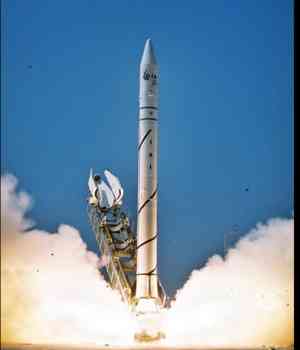"Yes, the IAF can.."..

Aharon Lapidot The New York Times published a grim outlook this week on the possibility of an Israeli attack on Iran’s nuclear facilities. The article’s bottom line was that such an operation would be far beyond Israel’s capabilities. The distance is too far, the article stated. There are too many targets, too much fortification and too much Iranian anti-aircraft defense. The operation would require too many planes, 100 by the article’s estimate, that would have to fly over hostile territory, and Israel has too few mid-air refueling tankers and insufficient bunker busting ammunition.
So what did the New York Times do here? They took all the public information, like the number of the Air Force’s planes, got a map and marked the target’s location and distance. They then made their assessment of Iranian fortifications, and “did the math.”
While it makes for adequate journalism, their calculations are too simplistic. Their logic is that 1+1=2. But the IAF operates by a different math - in the IAF’s world 1+1=3. The New York Times article failed to factor in the IAF’s operational wisdom, its use of unexpected methods and forces or the guile and subterfuge that makes its operations such astonishing successes, often leaving the world slack-jawed. This works in the same way that ordinary household ingredients can be transformed into something entirely different by an expert chef.
One example of this is the strike that launched the Six-Day War in 1967. On paper, the operation was impossible to carry out: too many targets requiring use of almost every available aircraft (some 200 jets) in the attack of dozens of airfields in Egypt and Syria. Regardless, in one day – three hours in fact – the IAF wiped out some 400 enemy aircraft and achieved total aerial supremacy.
Operation Entebbe too, appeared impossible on paper, and included a refueling stop far away from home (in Nairobi, Kenya). The airstrike on the PLO headquarters in Tunisia took place 1,280 miles from Israel - which is even further than Iran - not to mention the Iraqi nuclear reactor strike, over unknown territory, or the strike on the Syrian nuclear facility (according to foreign reports).
Without delving into whether Israel should or shouldn’t attack Iran, or if it could deal with the potential fallout of such an action, and with all due respect for the New York Times (and plenty of respect is due), I believe that if there is one thing that the IAF has taught us is that when it decides to undertake a mission - it can get it done.
And another thing: the very possibility of an Israeli attack is a powerful and intimidating card for the U.S., and that is before a single F-15 has left the ground.
0 comentarios